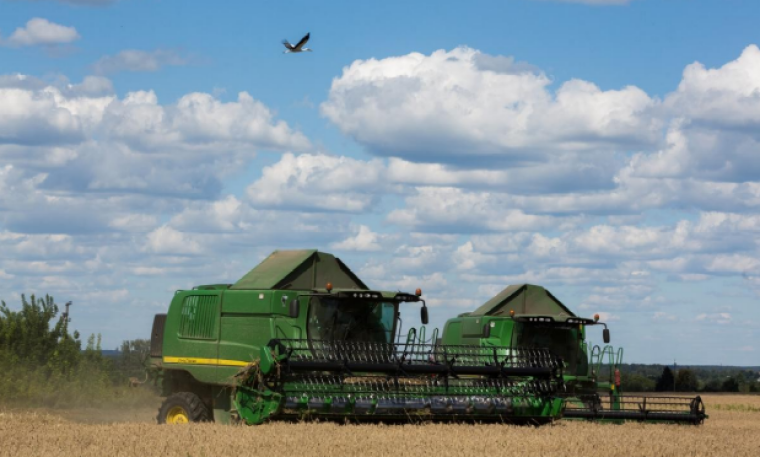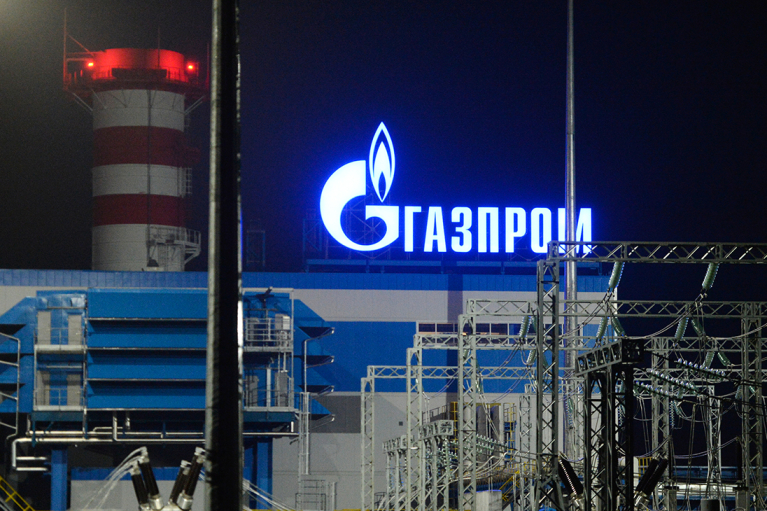From State Farms to Latifundists: How Ukraine's Farming Sector Has Changed over 30 Years of Independence
At the time of the collapse of the USSR, Ukraine was at the brink of a food crisis: store shelves were empty, and some goods, such as sugar, were being rationed. In three decades, everything has changed: our country has regained the glory of the "bread basket" of the world, and domestic stores are filled with food of all kinds. If only there was money

UNIAN offers to recall how the country's agricultural sector has changed over the years, turning into a locomotive of the national economy.
The "breadbasket of the world", a leader in the production of grain, sunflower oil and many other food products, one of the best and most reliable food suppliers in the world — all this and more can be said about modern Ukraine.
Our country is rightly recognised as one of the flagships in the agricultural sector, making a significant contribution to the world's food security.
We have achieved success not only because of the mild climate and incredibly valuable and fertile black soil that nature has given us, but also because of our hard work, experience and ability to learn and adopt new technologies and practices from Ukrainian farmers and entrepreneurs.
This was preceded by a long and difficult journey.
The first years of independence
After declaring independence in 19911, a half-starved Ukraine, with people queuing for basic necessities, entered a new stage of its history with enormous resource potential — land, skilled labour and an industrial base. However, this agricultural giant was technologically backward, lacking financing, and isolated from the global economy.
"In 1991, we inherited from the USSR a very powerful but technologically backward agricultural sector. The Ukrainian 1990s was a period when fields were overgrown with weeds, cattle was being slaughtered en masse, while factories were being cut up for metal," recalls Gennadiy Bobov, president of the Panda Group of Companies.
The old rules based on state farm economics were no longer in force, and new rules based on market principles had not yet been established. Many farmers were wary of the changes, seeing many problems and few opportunities.
These were gloomy years: those who came to power did not have time to think about building a competent agricultural policy for decades to come.
"In the 90s, a rare person in power thought about the future, about systemic development, about strategy. This is the most crucial mistake. As a result, a huge technological and production base was simply destroyed. The destroyers earned millions on this," Bobov says.
Support for the emerging farming industry, the return of the right to dispose of one's land, technical re-equipment, mastering new technologies, irrigation of arid regions, and many other important things were yet to be done in Ukraine.
"The command economy, the lack of direct interest in economic performance outcomes, is what prevented us from developing. And what we have now, and we are now one of the world's largest producers, speaks to the global evolutionary processes that Ukraine has gone through over the years," says Oleg Bakhmatyuk, owner of Ukraine's largest agricultural group, Ukrlandfarming.
Breakup of state farms and the first agricultural holding companies
Back in 1991, there were 10,000 state-owned farms in Ukraine. Some of them were efficient farms, but most of them worked according to the principle: "If it's a state farm, it's no one's.
The dramatic changes began in 1995 with President Leonid Kuchma's decree on land reform and parcelling of land from former state farms to individual farmers. At that time, about 5 million peasants received land shares.
"As a result, by 2000, everyone started registering private companies en masse. This was the starting point for the development of private companies in the agricultural sector. Some of them, faced with the new economic conditions, began to accumulate debts, and input suppliers began to take over corporate
rights of debtors, effectively becoming the first agricultural holding companies," Roman Slasten, Director General of the Ukrainian Agribusiness Club Association, told UNIAN.
Decades of living in the command Soviet economy were taking their toll. The newly created farms did not understand what to do with their agricultural assets, and they had to invest huge resources to turn this business into a profitable one. Those who managed to do so continue to operate successfully to this day, but a significant number of even the then top 10 companies are now history.
Alongside the agrarian holding companies that were just starting to develop, small farmers continued to farm their land parcels.
Although the 90s and early 2000s were not easy: ordinary peasants had neither funding nor serious government support, they virtually met the country's needs for various types of food during this period of transition.
By 2001, there were already more than 43,000 corporate farms in Ukraine
The era of private farms
During the first ten years of independence, the first long-term investors began to emerge in the young nation, trying to modernise the remnants of the processing industry, purchase equipment and technology, and gradually unbundle land portfolios. A period of concentration and development began.
"By 2001, there were already more than 43,000 corporate farms, more than 9,000 business associations, and 4,000 private agricultural companies in Ukraine, compared to only five hundred state-owned ones," recalls Bakhmatyuk, owner of Ukrlandfarming.
Ten years later, the private agricultural sector made a serious statement to the world: domestic companies began to attract multimillion-dollar foreign currency investments, aggressively implement modern technology and plant construction, and to actively enter foreign markets.
By 2011, an influential lobby of the largest and most successful agricultural companies had been formed in Ukraine — and is still active today — whose brands are now represented in all stores in the country and in many countries around the world.
And, most importantly, they began to build new relationships and social safety nets in rural areas, helping rural schools and kindergartens, building roads and modern infrastructure. And all of this on their own, without the help of the government, and sometimes in spite of its interference.
"The main lesson is that you cannot rely on the government, unless the government learns to plan strategically for the years ahead, unless there is a culture of reasonable continuity of power and continuity of reforms. But this huge disadvantage also offers an advantage: we, agricultural producers, large, medium and small farms, have learnt to measure our strength correctly, learnt to work with limited resources, learnt to appreciate the people we work with more," Bakhmatyuk emphasised.
And thanks to the diligence of Ukrainian farmers and entrepreneurs, 2021 can be called the year of the country's jubilee, when the agricultural sector has confidently become the locomotive of the national economy. It not only provides the entire country with food, but also brings in billions of foreign exchange earnings annually and maintains strong trade relations with the whole world.
Photo by UNIAN
Historic opening of the land market
A truly historic event made the headlines on 1 July 2021 — the opening of the agricultural land market.
The land reform in Ukraine lasted for three decades, encountering strong resistance along the way, and reached its culmination only in the summer of 2021, when the market finally started working despite the apocalyptic predictions of its opponents.
The launch of a full-fledged market restored historical justice by giving Ukrainian farmers the right to fully own their land. It is worth emphasising that this is a right — contrary to the myths spread by
Despite the opposition to the reform, Ukrainians are not being forced to sell their land parcels. But now, if they wish, they can do so in a completely transparent manner and receive a fair amount for the land plot.
The absence of this right for almost a hundred years (and since 2001, a moratorium on land sale has been in place in Ukraine) has certainly hampered the development of the industry, legal and financial relations. After all, not all farmers owned land parcels, they could not buy them, and it was impossible to start an agricultural business on leased land, which the owner could lease to another lessee at any time,
- is not the most reliable business.
"Over the years, agriculture has gone through the decline of the 90s, the revival of the 2000s and the boom of the last ten years — from the period when millions of hectares were unused and overgrown with weeds, and to the current frantic competition for cultivating every single piece of arable land," says Slasten, CEO of UCAB.
The land reform gave Ukraine civilised land relations, which exist in all civilised democratic countries of the world. The free land market is an absolutely healthy economic model, which only the communist Cuba, totalitarian North Korea and two or three other countries of the "third" world do not have.
"The opening of the land market is, first of all, a transition from the Soviet mentality to a normal economic model. This is about fairness in the treatment of individual land owners, about the possibilities of lending and investment in the economy. But this requires a land market that is as free from restrictions as possible, with state control over the observance of the integrity and rights of sellers and buyers," said Bakhmatyuk, founder of Ukrlandfarming.
The Ukrainian land market is rather closed. Only Ukrainian nationals can buy land and own no more than 100 hectares.
During the two months of the market's operation, Ukrainians sold about 17,000 hectares of land to each other — mostly small plots, often less than a hectare in size.
This is not enough to significantly accelerate the economy of the country, which has a land portfolio of more than 42 million hectares of black soil, but it is definitely a start.
Challenges facing rural Ukraine
The Ukrainian countryside in its traditional sense — a farmyard with a farmhouse and cattle, a small orchard and a field where the whole family works during the harvest — has long since disappeared.
Many villages are dying out, young people are leaving for the cities, and there is often no one to look after the farm.
Centuries-old traditions are also being lost. While 30 years ago, every second or third rural family in this country kept at least one or two cattle, now only a few can boast of this. Villagers are less and less motivated to keep cattle — it is expensive, and the 5,000 hryvnia allowance from the state does not begin to cover the costs. So they simply slaughter the cattle.
"The Ukrainian village that existed in the 1980s and 1990s is long gone. There are no young people, no workers. The number of cattle is decreasing — there is simply no one to rear them. It is necessary to stimulate large-scale production of high quality milk, to support investors," says the Panda group CEO Bobov.
After the collapse of the collective farms in the 1990s, our peasants did not have the opportunity to follow the European way: to unite into small farms, which are still successfully operating in Poland, Germany and other European countries and receive good subsidies from the EU.
In the first years of independence, the young Ukraine went through difficult times of hyperinflation, lack of resources and a spike in crime. Farmers had to survive.
The new politicians are trying to correct the mistakes of the past, as best they can. The government has begun to support small farmers by introducing tax breaks and subsidies — albeit rather modest ones — for family and small corporate farms, which are gradually finding their niche in the national economy.
There are big plans to develop rural tourism in Ukraine. All this gives hope for the revival of the Ukrainian village in the coming decades.
"In order to build something new, it is not necessary to destroy something old. The national interest should be above all. Agriculture is not only a sector of the economy, it is also a way of life for a huge number of Ukrainians," Bobov said.
Keeping up with the times
In 2021, some of Ukraine's fields look truly futuristic compared to previous decades. Drones are increasingly flying over the fields instead of birds — including Ukrainian-made ones that help farmers efficiently farm their land.
Satellite imagery helps farmers predict future harvests and helps the authorities assess whether certain lands are being cultivated properly.
Expensive irrigation systems are no longer a luxury item and are becoming a necessity for many farms, given the rapidly increasing global warming and the increasingly arid climate.
"Today, farming is becoming more and more risky, and this is no longer limited to the south of Ukraine. Drought, when it comes, takes all regions by surprise. That is why it is important to be prepared, to get into watering and drip irrigation. It's expensive, but for a small field, the amount is quite affordable, and you are almost guaranteed to get a good harvest. Agriculture has to keep up with the times and become as modern as any other type of business," says Stanislav Smirnov, an agronomist at Niva Zolotaya.
An important recent trend has been that domestic farmers are increasingly investing in processing rather than solely producing raw materials. After all, anyone can grow vegetables and fruit under favourable conditions, but drying them into chips or subjecting them to dry freezing with dehydration is a completely different level. And the cost of the final product will be many times more expensive.
There is more and more diversity: In addition to traditional crops such as wheat and buckwheat, Ukraine is beginning to grow organic and niche crops such as blueberries, asparagus and sweet potatoes. And in 2020, our country unexpectedly became the largest supplier of edible snails to the UK.
ua.depositphotos.com
The records of independence
Over the course of its 30-year history, Ukraine has set many agricultural records, shaken up the global food market and become a reliable trading partner for dozens of countries.
Ukraine is rightly recognised as the world's largest exporter of sunflower oil, which has a major impact on global trade trends. We are one of the world's leading exporters of wheat and corn, which are popular on all continents.
Our country is also the world's second largest supplier of honey, which is renowned for its excellent quality and unique flavour.
Ukrainian dairy, meat and ice cream are popular in Europe, Asia and
many African countries. And the world is gradually learning about Ukrainian wine and beer, which are sold in stores in London, Berlin and other European cities.
"Made in Ukraine" is no longer just a slogan, but a real brand that we want to buy, rebrand and promote to new markets. And, of course, we Ukrainians have a lot to be proud of in the agricultural sector!
There are still many new records, achievements and innovations ahead. Ukraine has come a long way from Soviet state farms to modern agricultural enterprises for a reason, and I want to believe that the achievements of farmers and reformers in the sector will be multiplied.







